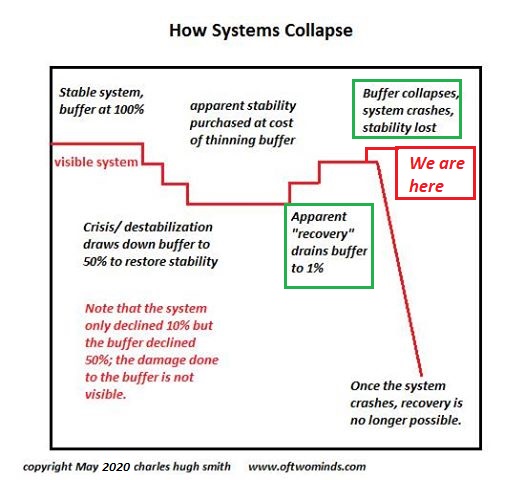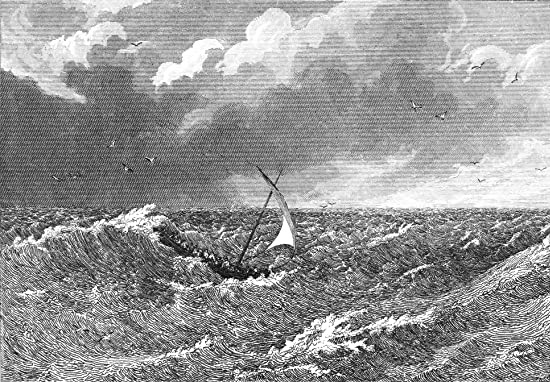
The chance to reduce our exposure to risk is always present in some style, however welcoming this chance becomes crucial when precarity and change-points increase like restless seas.
The Chinese characters that make up the equivalent of “crisis” are notoriously– and incorrectly– equated as “danger” and “chance.” This mis-translation has actually reached the strange prominence of being duplicated frequently adequate to be taken as precise, but according to Wikipedia and other sources, the more accurate translation is “precarious” plus “modification point.” (Chinese speakers might have the ability to shed a lot more light on the characters’ tones of meaning.)
The American attachment to “crisis” equating to “threat” and “chance” is easy to understand: the American “can do” culture loves positive calls to action (“when life hands you lemons, make lemonade,” etc) and so crisis providing chance fits this perfectly.
When it comes to the threat: that’s the required motivation to grab the opportunity.
Lost in this cheerleading of great opportunities simply waiting beneath an oil slick of risk is the possibility that the precariousness of impending change offering sure-fire opportunities might be wishful thinking.
There is no guarantee that “crisis” is just 10% danger/precarity and 90% unalloyed chance; it may simply as well be 90% precarity and 10% incredibly dangerous opportunity where the odds of failure exceed those of success.
My preferred portmanteau of crisis is danger and opportunity due to the fact that threat is the essential yin to opportunity’s yang: every chance to prosper is equally a chance to fail.
America’s “can do” culture processes this capacity for failure in 2 methods:
1. Since “He who will not run the risk of can not win” (John Paul Jones), and winning is the objective, then risk is simply part of the plan.
2. Glorify failure as the necessary stepping stone to success: “Fail often, fail fast” (or as created by John C. Maxwell, “Fail early, stop working frequently, but always fail forward”).
While getting rid of repeated failures is undoubtedly the path of development, it is not teleological, implying that stopping working often and failing fast does not always end in success; it might end in a failure so total that there are no longer the resources readily available to recuperate. Nobody discuss this possibility, obviously, as it runs counter to “can do” optimism.
Combining precariousness and an unstable point of profound modification gets us closer to a sensible evaluation of today moment, for it captures the reality that doing nothing isn’t a warranty of security. Hoping that doing nothing is the method to play it safe is to misconstrue precarity and instability: not doing anything might the quickest pathway to collapse.
In my analysis, the massive structures of globalized supply chains, financialization, debt-funded speculation and the destabilizing consequences of extreme inequality are all perched on the precarious edge of essential modification.
We do not manage these massive forces, of course, however we do manage our reaction to their phase-shift/ decay/ collapse. This makes risk and chance personal.
If we grasp that doing nothing may be dreadful as taking bold action, we get near to the nature of risk and the inherent uncertainty of the result, no matter what course of action we select. Doing nothing can result in collapse, however so can bold action.
That said, the lower one’s dependency on precarious systems, the lower one’s exposure to dangers we can’t control. The lower one’s intake, the lower one’s reliance. The lower one’s debt (with no financial obligation being the lowest threat position), the lower one’s exposure to the danger of bad things occurring economically.
The lower the population density, the lower the risk of herd mentality running amok. The higher the amount of food grown within strolling range, the lower the risk of starvation.
These observations are not cheerleading the embrace of danger and failure as the foolproof path to success; the goal here is to lower the risk of failure by lowering exposure to vulnerabilities, dependences and fragile points of precarity over which we have no control.
Even if we can’t lower our direct exposure to risk in this minute, we can conceptualize Fallback and Strategy C– possible actions to dangers rising and chances lessening.
The opportunity to lower our direct exposure to run the risk of is constantly present in some style, but embracing this chance becomes important when precarity and change-points increase like agitated seas.


Thank you, everybody who dropped a hard-earned coin in my asking bowl this week— you bolster my hope and refuel my spirits.
This essay was very first released as a weekly Musings Report sent specifically to customers and patrons at the $5/month ($54/year) and greater level. Thank you, clients and customers, for supporting my work and totally free website.
If you discovered worth in this material, please join me in seeking solutions by ending up being a $1/month customer of my work via patreon.com.
Current Videos/Podcasts:
Keiser Report|The Disaster of the Treadmill (25:30)
My current books:
A Hacker’s Teleology: Sharing the Wealth of Our Diminishing Planet (Kindle $8.95, print $20, audiobook $17.46) Check out the first area totally free (PDF).
Will You Be Richer or Poorer?: Profit, Power, and AI in a Shocked World
(Kindle $5, print $10, audiobook) Read the first area totally free (PDF).
Pathfinding our Destiny: Preventing the Final Fall of Our Democratic Republic ($5 (Kindle), $10 (print), ( audiobook): Read the first section for free (PDF).
The Experiences of the Consulting Theorist: The Disappearance of Drake $1.29 (Kindle), $8.95 (print); read the first chapters free of charge (PDF)
Money and Work Unchained $6.95 (Kindle), $15 (print) Read the first section free of charge (PDF).
End up being a $1/month customer of my work via patreon.com.
KEEP IN MIND: Contributions/subscriptions are acknowledged in the order received. Your name and e-mail remain private and will not be provided to any other individual, business or company.
|
Thank you, Darren B. ($200), for your beyond-outrageously generous contribution to this site– I am considerably honored by your unfaltering assistance and readership. |
Thank you |
, Tom K. ($5/month), for your splendidly generous promise to this website– I am considerably honored by your support and readership. |
|
Thank you, Matthew A. ($5/month), for your superlatively generous promise to this website– I am considerably honored by your assistance and readership. |
Thank you |
, Michael T. ($35), for your marvelously generous contribution to this website– I am greatly honored by your steadfast assistance and readership. |

